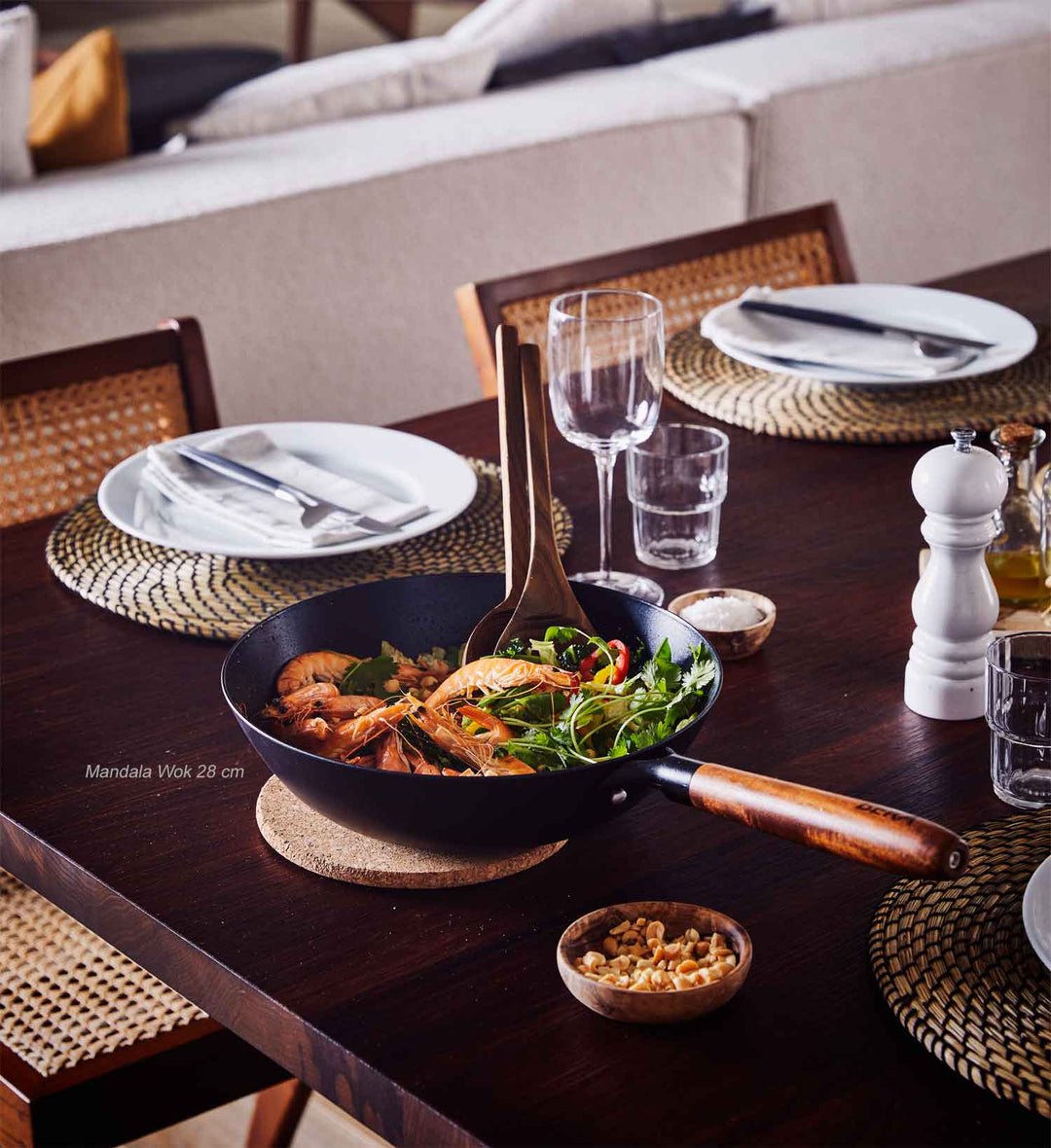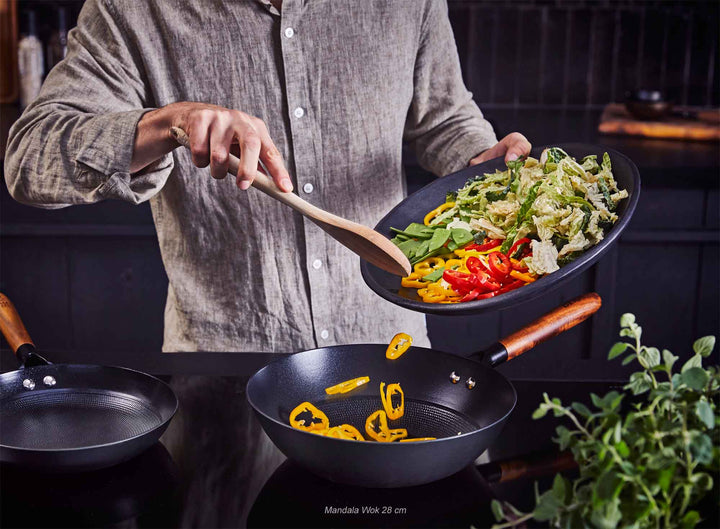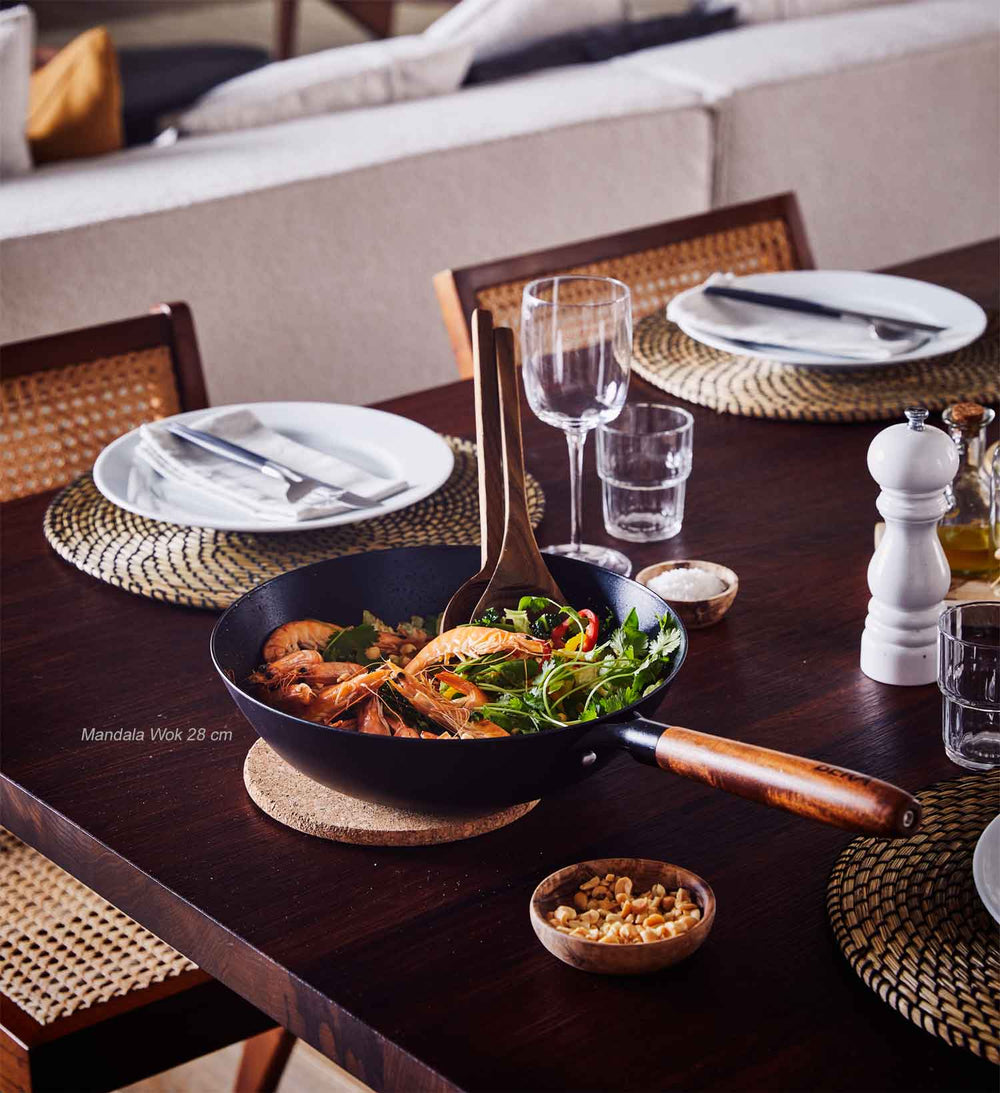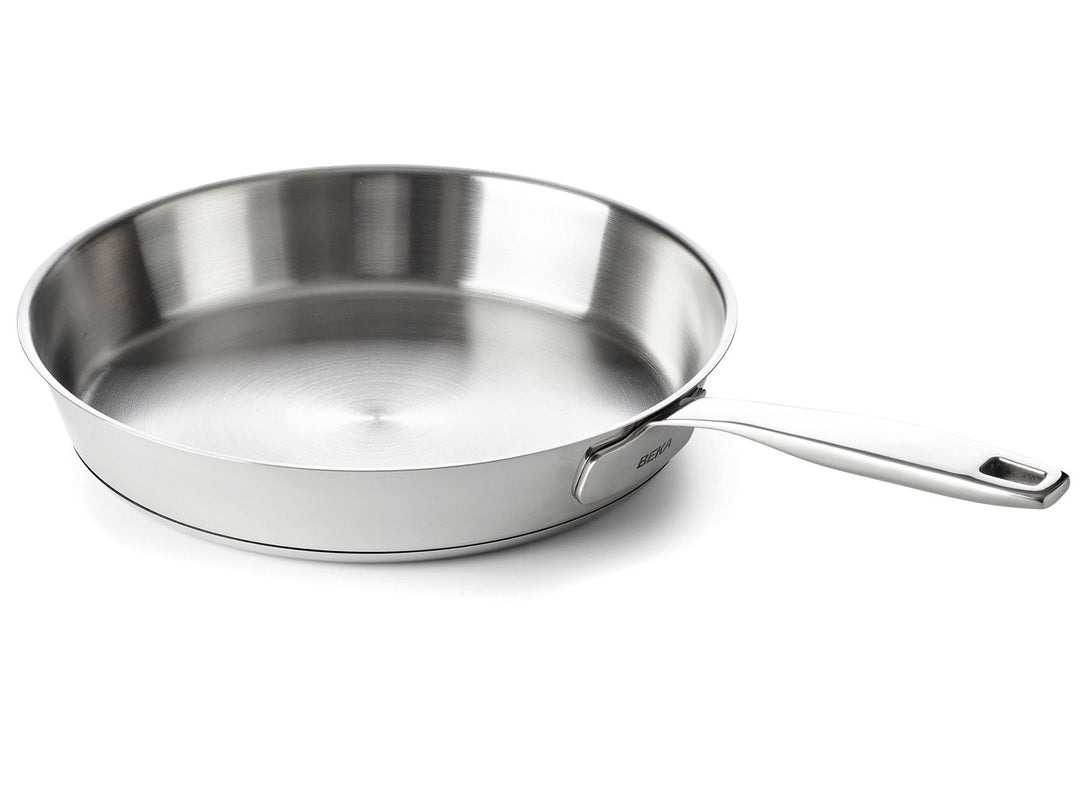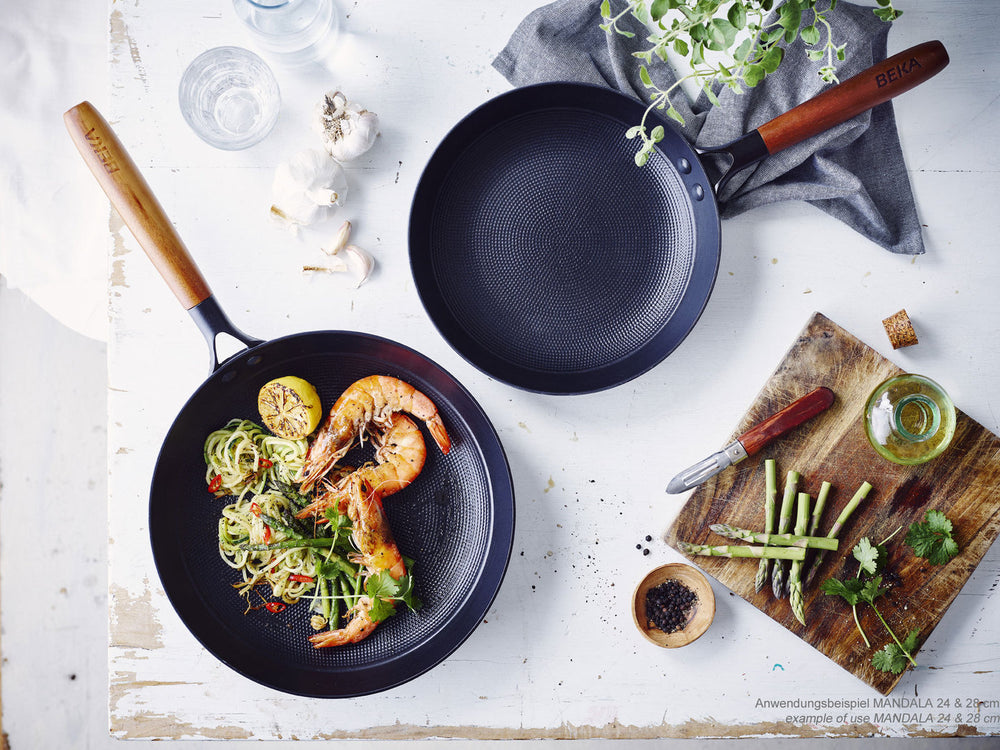Ceramic-coated wok pan 28 cm made of iron
The striking embossing on the frying surface of the MANDALA wok pan from BEKA is immediately noticeable. This embossing ensures improved fat distribution and facilitates the drainage / evaporation of escaping meat juices. Together with the good heat properties of the iron, this creates very good conditions for searing, especially meat.
Easy to clean, no seasoning needed
Thanks to the high-quality ceramic coating on the inside of the MANDALA wok pan, there is no need for the usual seasoning of iron pans before use. The ceramic coating also makes cleaning the iron pan child's play.
With acacia wood handle
The outside of the MANDALA pan is enameled, so it can even be used on the grill. The beautifully shaped handle made of real acacia wood sits comfortably in the hand and is heat-insulating.
- A quality product from BEKA.
- Pan made of pressed cast iron, with ball embossing inside.
- Base thickness approx. 3 mm.
- Enameled outside, black ceramic coating inside, easy to clean.
- Heat-insulating acacia wood handle.
- Upper inner diameter 28 cm.
- Height approx. 8 cm.
- Length with handle approx. 51 cm.
- Base diameter (footprint) approx. 11.5 cm.
- Weight approx. 1.7 kg.
- Suitable for all types of stoves, including induction.
- Suitable for BBQs / grills (position the wooden handle away from heat!)
PfannenProfis service note: Due to the special production method, in which the still liquid iron is pressed into shape with a pressing stamp thereby also receiving its characteristic embossed base, it occasionally happens that some of the many small indentations in the embossed base are slightly larger/deeper than others.
This does not affect the coating, stability and usability, and this production-related feature is not subject to complaint.
PfannenProfis instructions for use:
Due to the conical shape of the side wall, we do not recommend using lids on this pan. If you still want to use a lid, we recommend the Castey glass lid with soft silicone rim, as the lid frame adapts slightly to the conical wall of the pan.
Please note, you do NOT need the maximum heat of the hob for crispy searing! A medium-high setting, e.g. level 7 out of 9, is usually sufficient and protects the easy-care properties of the ceramic coating.
When using this pan on an induction hob, NEVER heat the pan immediately over a high heat. ALWAYS preheat the pan slowly at a very low power level and only then gradually increase the power so that the material has time to distribute the heat and expand more or less evenly. NEVER use the power/booster setting.
Understanding the information on the size / diameter, height and capacity of cookware:
1) The most important information: diameter = upper inner diameter

The diameter is the most important indication of the size of pots and pans. The measurement is taken at the top inside , i.e. on the inside of the pan/pot rim; hence the designation upper inner diameter, which you will find in our item descriptions. A 28 cm pan has a diameter of 28 cm from one inner edge to the other inner edge. This measurement method is an international standard and authoritative, unless expressly stated otherwise in the item description.

For square pans (e.g. many grill pans) and roasters, the size is given as the product of two lengths. Here you measure again at the top inside, at the longest point, which is usually in the middle. For example, many grill pans have a size of 28 x 28 cm.

Fish pans and roasters often have an oval shape. As shown above with the square pans, the longest internal dimension is given here. Such a 38 cm fish pan has an inner length of 38 cm on its longest side. At right angles to this is the short side of eg 24 cm. As a result, the pan would be declared as 38 x 24 cm.
2) Bottom diameter = contact surface

When we talk about base diameter, we mean the diameter of the contact surface, i.e. the surface with which the pan, pot or roaster stands on the stove. Not meant is the frying surface! The information about the base diameter can be helpful when it comes to choosing a suitable cooking surface for the cookware. The size of the cooker and the diameter of the base of the cookware should match to a certain extent in order to avoid damage to the cookware and to ensure that the cookware functions as well as possible.
ATTENTION, induction-suitable aluminum cookware:
Please note that cookware made of aluminum / cast aluminum for induction cooking usually has a stainless steel disc on the base, the diameter of which is often smaller than that of the base (marked in blue in the picture). Where this applies, you will find the corresponding information in our item descriptions.
3) Height of pots and pans

Unless expressly stated otherwise, the indication of the height of a cookware describes the outer edge height, from the top edge of the cookware perpendicularly to the contact surface, without taking lids, handles etc. into account.
The inner height (i.e. from the frying surface up to the edge) can be determined approximately by subtracting the base thickness from the height.
4) Capacity of a cookware

When it comes to capacity, there are often misunderstandings: the capacity of a cookware indicates how much the container can hold at most. That always means filling up to the brim! This is international standard. The filling quantity that can be used when cooking is always less than the capacity.
Please note that in the case of pressure cookers, for safety reasons, the filling quantity permitted in pressure cooking is significantly lower than the capacity of the pot.
 DE: 4.90 €
DE: 4.90 €
 EU: from 14.90 €
EU: from 14.90 €
 UK: from £18.40, delivered duty paid
UK: from £18.40, delivered duty paid
 CH: from 19.90 € (duties & charges may apply with / after delivery)
CH: from 19.90 € (duties & charges may apply with / after delivery)
 USA & CND: from 35.70 € (duties & fees may apply with / after delivery)
USA & CND: from 35.70 € (duties & fees may apply with / after delivery)
More details about shipping costs here.



